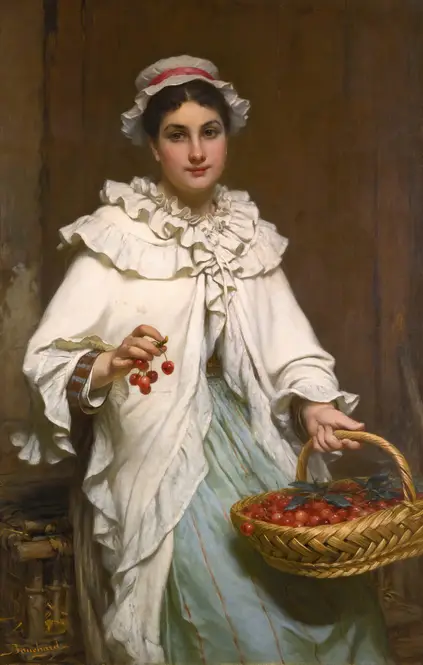Pierre Louis Bouchard
Pierre Louis Bouchard (1800–1870), French, Though not a household name, this French artist carved out a niche with his delicate interplay of light and texture, often blending academic precision with a whisper of Romantic sensibility. Trained in Paris during the turbulent post-Napoleonic era, his work absorbed the era’s contradictions—orderly draftsmanship paired with fleeting emotional intensity. Landscapes and portraiture dominated his output, though he occasionally ventured into allegorical scenes, where his knack for luminous skin tones and fabric folds shone. Critics of the time noted his "quiet drama," a quality that set him apart from both the flamboyance of Delacroix’s circle and the cold rigor of Ingres’ disciples.
Financial stability eluded him, forcing a reliance on private commissions—bourgeois families, minor aristocrats—yet this constraint bred intimacy. His sitters seem caught in unguarded moments, a half-smile or averted gaze suggesting inner lives beyond the canvas. Later, he experimented with looser brushwork, likely influenced by the Barbizon School, though he never fully abandoned his early training. Today, a handful of his works linger in regional museums, often misattributed or overlooked. Still, when encountered, they reward close looking: a glint of sunlight on a brooch, the way shadow pools in a folded letter—details that hint at an artist who found grandeur in the subtle.
Financial stability eluded him, forcing a reliance on private commissions—bourgeois families, minor aristocrats—yet this constraint bred intimacy. His sitters seem caught in unguarded moments, a half-smile or averted gaze suggesting inner lives beyond the canvas. Later, he experimented with looser brushwork, likely influenced by the Barbizon School, though he never fully abandoned his early training. Today, a handful of his works linger in regional museums, often misattributed or overlooked. Still, when encountered, they reward close looking: a glint of sunlight on a brooch, the way shadow pools in a folded letter—details that hint at an artist who found grandeur in the subtle.
-

La cueilleuse de cerises
Pierre Louis Bouchard (French, 1800–1870)A woman gathers cherries under dappled sunlight, her quiet labor a tribute to the harmony between human hands and nature’s bounty.
